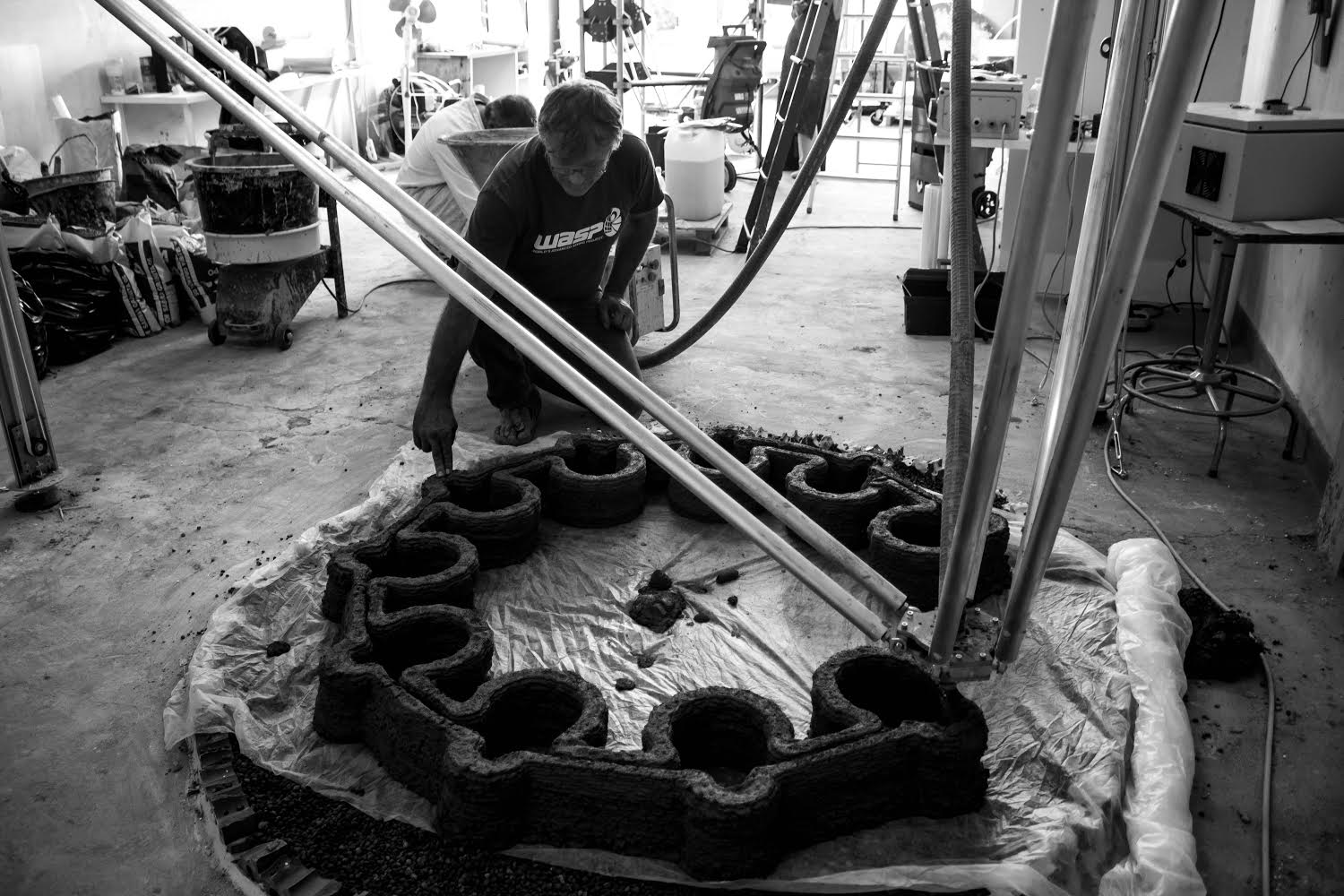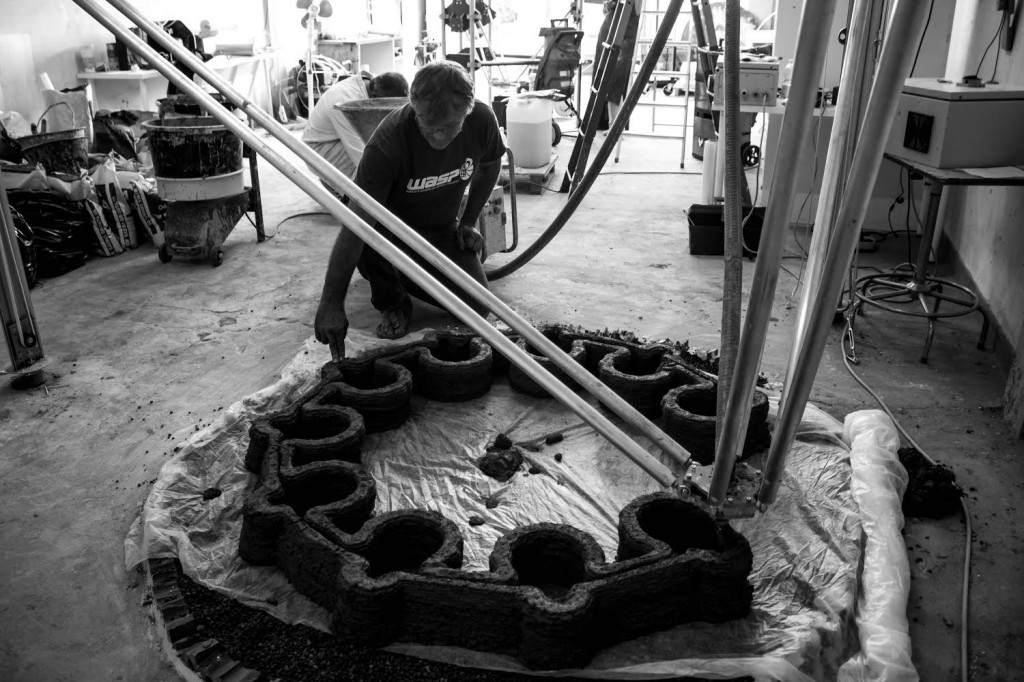WASP 3D Printer Builds with Mud

WASPs 3D printer at work, demonstrating its capability to extrude materials such as clay and mud. Courtesy of WASP.”
Latest News
October 22, 2014
It’s hard to get a count of the number of homeless people around the world. The definition of homelessness varies from country to country and person to person. In 2005, the United Nations Commission on Human Rights estimated the total number of homeless around the world at 100 million, and that number is likely to have increased along with population.
Practical solutions to the problem are just as difficult to come by as accurate numbers. It’s hard for most folks to even envision 100 million people, let alone a solution to such an enormous problem. Additive manufacturing (AM) may play a key part in future low-cost housing efforts, and WASP’s system may play a pivotal role.
 WASP’s 3D printer at work, demonstrating its capability to extrude materials such as clay and mud. Courtesy of WASP.
WASP’s 3D printer at work, demonstrating its capability to extrude materials such as clay and mud. Courtesy of WASP.WASP stands for World’s Advanced Saving Project. It is a company headed by CEO Massimo Moretti. Moretti’s goal is to find a way to provide housing for people around the world using environmentally friendly methods and materials. Moretti calls this the 0 kilometer solution, meaning everything needed to build a house can be found within arm’s reach.
When searching for a solution to the world’s homeless problem, Moretti was inspired by the mud dauber; a wasp that uses mud and clay to build its nest. WASP intends to use AM in a similar fashion, constructing housing for the homeless using clay, mud, and other readily obtainable materials.
“We have a big goal and we work every day in little things to achieve it,” said Moretti. “We first created commerciable [sic] extruders for clay, porcelain and ceramic, to give the chance of producing objects which have functionality and commercial value. Thanks to clay printing it is possible [to have] a real self-made production that is practical and commerciable [sic].
WASP took a small version of its AM system to show off at the Rome Maker Faire, and intends to reinvest any profits from selling the system in an effort to build a self-sustaining company. According to the company, large versions of the system (i.e. the kind that build houses) can be assembled by a two-man team in two hours and be ready to print as quickly as materials can be readied.
Moretti and WASP aren’t alone in their belief AM may be the solution to homelessness. Other potential solutions include experiments with sand, and pre-fab buildings that are constructed from what is essentially trash. Below you’ll find a video about WASP’s printer.
Source: WASP
Subscribe to our FREE magazine, FREE email newsletters or both!
Latest News
About the Author
John NewmanJohn Newman is a Digital Engineering contributor who focuses on 3D printing. Contact him via [email protected] and read his posts on Rapid Ready Technology.
Follow DE





